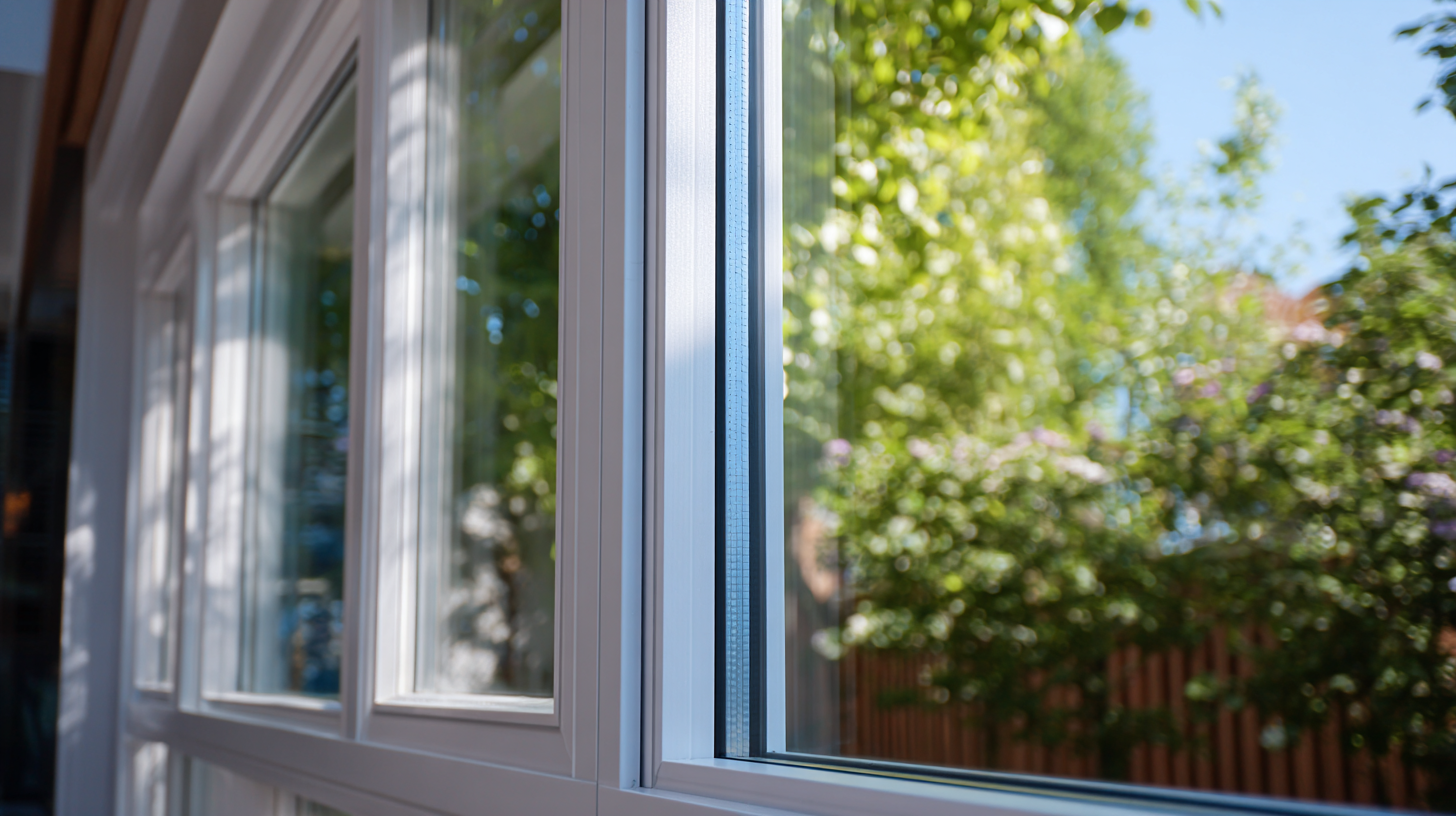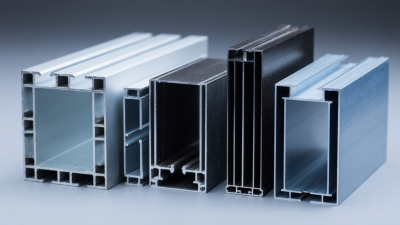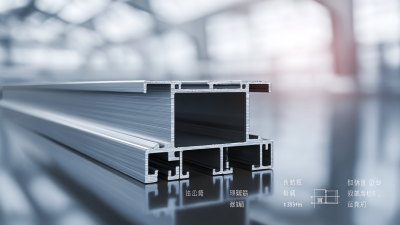In today's quest for enhanced energy efficiency in building design, "Insulated Aluminium Window Profiles" have emerged as a pivotal solution. According to a report by the International Energy Agency, windows account for up to 30% of a building's energy loss, making the choice of window materials and construction crucial in sustainable architecture. Insulated Aluminium Window Profiles not only provide superior thermal performance but also offer remarkable durability and aesthetic value, addressing both energy efficiency and visual appeal. Studies indicate that homes equipped with such advanced window profiles can reduce heating and cooling costs by approximately 15-20%, while simultaneously increasing property value. As market demand for energy-efficient solutions continues to grow—projected to rise by 18% annually—integrating insulated aluminium profiles stands out as a strategic approach to meet regulatory standards and consumer expectations, thereby ensuring a greener future for urban developments.

Insulated aluminium window profiles have emerged as a popular choice for enhancing energy efficiency in modern architecture. These profiles are designed with a thermal break, which effectively reduces heat transfer between the interior and exterior of a building. This feature is crucial for maintaining comfortable indoor temperatures and minimizing energy consumption. By utilizing advanced insulation technologies, insulated aluminium window profiles can significantly lower heating and cooling costs, making them an eco-friendly option for homeowners and businesses alike.
Beyond energy efficiency, these window profiles also offer durability and aesthetic appeal. Aluminium is a robust material that resists corrosion and requires minimal maintenance, ensuring the longevity of the windows. Furthermore, insulated aluminium window profiles are available in various finishes and designs, allowing for seamless integration into any architectural style. By choosing these windows, property owners not only invest in energy savings but also enhance the overall visual appeal of their buildings, contributing to both sustainability and design excellence.
 Insulated aluminium windows offer significant advantages when it comes to energy efficiency, particularly in reducing heat loss within buildings. The design of these windows incorporates thermal breaks—sections made of non-conductive materials that prevent the transfer of heat. This enhancement allows homes and commercial properties to maintain a stable internal environment, minimizing the need for heating in the winter and cooling in the summer. By effectively lowering heat loss through the windows, insulated aluminium profiles contribute to reduced energy consumption, leading to lower utility bills.
Insulated aluminium windows offer significant advantages when it comes to energy efficiency, particularly in reducing heat loss within buildings. The design of these windows incorporates thermal breaks—sections made of non-conductive materials that prevent the transfer of heat. This enhancement allows homes and commercial properties to maintain a stable internal environment, minimizing the need for heating in the winter and cooling in the summer. By effectively lowering heat loss through the windows, insulated aluminium profiles contribute to reduced energy consumption, leading to lower utility bills.
Moreover, the implementation of insulated aluminium windows is a strategic decision for sustainability and environmental conservation. With less heat escaping, buildings become less reliant on energy-intensive heating systems, which in turn decreases carbon emissions. This is an essential consideration in today’s climate-conscious world, where energy efficiency is paramount. Additionally, the durability and low maintenance requirements of aluminium windows enhance their appeal, as they can maintain their energy-efficient properties over time, providing lasting benefits both economically and environmentally.
Insulated aluminium window profiles offer a compelling alternative to traditional window materials when it comes to energy efficiency. Unlike standard wooden or PVC windows, insulated aluminium frames integrate advanced thermal break technology, which significantly reduces heat transfer. This characteristic is essential for maintaining comfortable indoor temperatures and minimizing reliance on heating and cooling systems. As energy costs continue to rise, the demand for materials that enhance a building's energy performance has become increasingly critical.
Moreover, the lightweight and high-strength properties of insulated aluminium contribute to easier installation and durability. Traditional materials often struggle with warping, rot, or fading over time, whereas insulated aluminium maintains its integrity and appearance under various weather conditions. In a rapidly evolving construction landscape where efficiency and sustainability are paramount, the transition towards insulated aluminium window profiles represents a significant advancement. Embracing modern materials not only improves a building's thermal efficiency but also contributes to long-term cost savings and reduces the overall environmental footprint.
| Window Material | Thermal Conductivity (W/m²K) | U-Value (W/m²K) | Sound Insulation (dB) | Durability (Years) | Cost (per m²) |
|---|---|---|---|---|---|
| Insulated Aluminium | 1.5 | 1.2 | 40 | 30 | $150 |
| Traditional Wood | 0.14 | 1.8 | 35 | 20 | $200 |
| Vinyl | 0.16 | 1.5 | 35 | 25 | $120 |
| Fiberglass | 0.20 | 1.6 | 40 | 30 | $175 |
When considering energy-efficient upgrades for homes, insulated aluminium window profiles stand out due to their superior thermal performance and long-term financial benefits. Initially, the cost of installation may seem daunting, but a cost-benefit analysis reveals that these windows can significantly reduce energy bills over time. By limiting heat transfer, insulated aluminium windows help maintain a stable indoor temperature, reducing reliance on heating and cooling systems. As a result, homeowners can expect substantial savings on their utility bills, often recouping their initial investment within a few years.

In addition to energy savings, insulated aluminium window profiles contribute to increased property value. Energy-efficient features are increasingly attractive to buyers, making homes equipped with these windows more marketable. Furthermore, local governments often provide incentives or rebates for energy-efficient home improvements, further enhancing the financial viability of such investments. The combination of immediate savings, reduced energy consumption, and added home value makes insulated aluminium windows a smart choice for anyone looking to invest in long-term comfort and efficiency.
In the quest for energy efficiency, selecting the right insulated aluminium window profiles for your home or business plays a crucial role, especially in climates like Canberra's, where temperature extremes demand effective heating and cooling solutions. Insulated aluminium profiles utilize advanced thermal break technology, reducing heat transfer and enhancing overall energy performance. According to industry research, properly insulated windows can reduce heating and cooling costs by up to 40% annually, substantiating their investment value for homeowners and businesses alike.
When choosing an insulated aluminium window profile, it's essential to consider factors such as thermal resistance (R-value) and frame construction. A higher R-value indicates better insulation, contributing to more comfortable indoor environments regardless of outdoor conditions. Additionally, profile design can significantly impact performance; designs that limit air leakage and incorporate argon gas between the glazing layers further enhance energy efficiency. Consulting data from energy efficiency studies reveals that homes with high-quality insulated aluminium windows can outperform traditional windows by as much as 50%, demonstrating their pivotal role in achieving sustainability goals.






